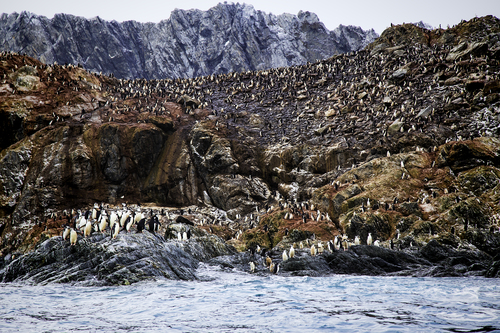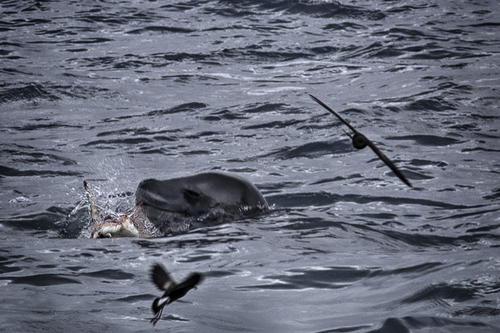We've just spent 3 days traversing the Northern Scotia Sea as it blends into the Southern Scotia Sea. This is the Southern Ocean, and after being tossed around by large swells for 3 days, I'm grateful to see land. We're approaching the South Shetland Islands, of which Point Wild on Elephant Island is starting to become visible. This is the gateway to Antarctica, the 6th continent I've visited and the premiere destination of all my plans.
At our morning briefing, I'm told by our group leader that access to Elephant Island is always extremely weather-dependent. She has been making voyages to Antarctica for thirteen seasons and has been able to approach this part of the South Shetland Islands only 3 times due to inclement conditions. Today, good fortune has apparently come our way. The sea is relatively calm, and a zodiac excursion is possible.
As we motor towards the island, my mind becomes absorbed in the history of this locale. This is the exact site where Sir Ernest Shackleton and his crew became stranded in 1916 during the Imperial Trans-Antarctic Expedition. As described in his journal, "The deserted rookery was sure at all times to be above high-water mark, and we mounted the rocky ledge to search for a place on which to pitch our tents. The disadvantages of a camp on the rookery were obvious-the smell, to put it mildly was strong; but our choice of site was small..."
Elephant Island is an ice-covered land mass that was named by early explorers, having spotted elephant seals on its shores. Situated 152 miles north-northeast of the tip of the Antarctic Peninsula, it rises to an elevation of 2,799 feet at Pardo Ridge. In the background, the Endurance Glacier becomes visible. Flocks of migratory gentoo penguins and seals line the coastline. The topography here is much different than what I had been seeing on South Georgia Island for the last several days.
In addition to the unusual redolence emanating from the penguin and fur seal dung that litters the shoreline, I am well aware that it is colder here than in the Falklands or South Georgia Island. Dressed in 3 layers, I also have 2 sets of gloves on. I remove the outer glove layer to operate my camera. In Antarctica, however, I'm finding out quickly that the exterior gloves cannot stay off for long without dealing with numb fingers.
While on the zodiac, our Swedish guide, also a professional photographer, becomes aware of some frantic splashing in the distance. As we approach this disruption in what is otherwise a most phlegmatic ambiance, I see a lion seal taking down a penguin! A fearsome predator in these waters, the lion seal has his teeth embedded in the penguin's neck as it gasps its final breaths before succumbing to his aggressor.
The wind starts picking up, and I'm starting to get cold. Operating under the dictum, "safety comes first," our zodiac starts heading back towards the Sea Explorer. I've taken enough photographs at this point and find my mind immersed in trying to imagine the emotions of Shackleton and his party shipwrecked in the pack ice of these waters. How was it possible for "The Boss" and 5 his men to have braved the Southern Ocean on the James Caird, a small life-boat, en route to South Georgia Island in search of help for his shipmates left behind on Elephant Island? Polar historians regard this journey as one of the greatest small-boat voyages ever attempted. Now that I've experienced this, I'll never forget it!




